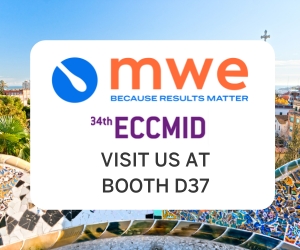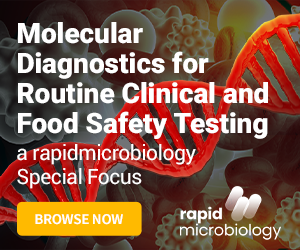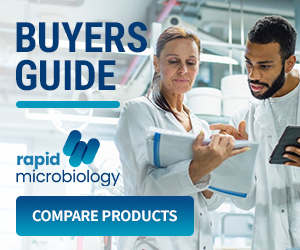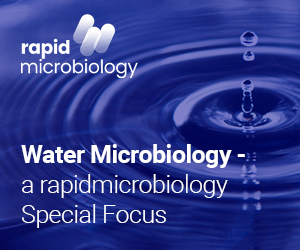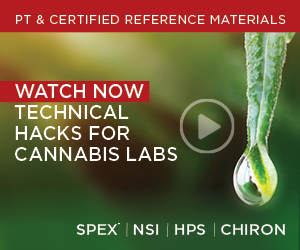Chromogenic Media
Microbiological Analysis using Chromogenic and Fluorogenic Media
Key Points
- Initially developed for clinical applications, chromogenic media are now available for food, water and environmental samples.
- They can allow enumeration, detection, presumptive identification sometimes even full identification from an isolation plate.
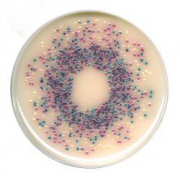
What are chromogenic / fluorogenic media?
Chromogenic and fluorogenic media are microbiological growth media that contain enzyme substrates linked to a chromogen (color reaction), fluorogen (light reaction) or a combination of both.
The enzyme substrates, e.g. ONPG, CPRG, and MUG are organism specific or where they are not, the target organism is selected for by suppression of competing microflora.
The target population are characterized by enzyme systems that metabolize the substrate to release the chromogen/fluorogen. This results in a colour change in the medium and/or fluorescence under long wave u.v. light.
Modifications to the incubation regime can add to the selectivity of the media and in some cases the target organism is confirmed without further testing. Other products confer resuscitation advantages to aid in the recovery of sub-lethally damaged cells.
How are they presented?
Chromogenic media are available as dehydrated bulk powder, or in granular format. They are also available in ready-to-use formats, and 'convenience' packs.
These convenience products are sterile mixtures in blister packs that are added directly to the water sample before incubation. They can be utilized as presence/absence tests or quantified either by directly plating onto the media or by using an additional disposable product offering an MPN count.
Which applications are covered?
Clinical samples
Chromogenic media are becoming widely used in clinical situations for preliminary screening of a range of samples.
Urinary tract infection is a relatively common disease, detection of infection can be evaluated at a local health centre using a chromogenic UTI dipslide technique though results may be ambiguous if training is not effective. More commonly UTI pathogens are detected using plated chromogenic media.(E.coli, Klebsiella spp. and Enterobacter spp) in a clinical laboratory.
Chromogenic media are increasingly used for screening hospital acquired infections such as MRSA/ORSA and Clostridium difficile. It is becoming critical that HAI are investigated as rapidly and easily as is feasible.
Other infections which can be screened using chromogenic media include: Candida, Streptococcus; Coliforms, E. coli; Enterococci as well as media for specific areas: Extended Spectrum ß-Lactamase-producing Enterobacteria (ESBL); Vancomycin Resistant Enterococci (VRE) and Group B Streptococcal disease in neonates.
Food testing
All the major food pathogens can be screened using chromogenic/fluorogenic media in a wide variety of food samples: Salmonella, Campylobacter, Listeria, Listeria monocytogenes, Staphylococcus/S. aureus, Coliforms, E. coli as well as specific target organisms such as, E. coli O157.
The exact methodology can vary according to the sample matrix and frequently involves pre-enrichment for 24 hours or more. This ensures that any pathogen contamination is allowed time to resucitate and achieve sufficient numbers to ensure that organisms are transferred on to the chromogenic medium when a sub sample is plated out.
There are also media available for specific application areas e.g. Enterobacter sakazakii in infant formulae, yeasts and moulds, Bacillus cereus, Vibrio parahaemolyticus.
Water testing
There are very strong regulatory frameworks covering water testing with different methods covering sample types such as drinking water, surface water, recreational water and waste water.
In general the target organisms are the same, i.e. coliforms/E. coli, enterococci, and general heterotrophs. Opinion varies on the best indicator organisms for each sample type, e.g. E. coli for drinking water and enterococci for recreational bathing water.
Some of the products already comply with the requirements of approved test methods issued by regulatory authorities, e.g. US EPA.
Other products are acknowledged as alternative test methods e.g. in the EN series.
Sensitivities in the order of 1 cell per 100mL water sample can be achieved using filtration.
What are the benefits?
- Shorter time to result compared with traditional methods for both negative screens and presumptive positives. Some media give confirmed results within 24 hours.
- The ready-to-use formats offer the further advantage of eliminating the need for time consuming preparation.
- The convenience pack formats make the whole test procedure disposable.
- Result interpretation is visual and in most cases does not require further testing.
- There are products that offer reduced incubation times to allow late arriving samples to be set-up and still have next day results.
Get the latest updates in Rapid Microbiological Test Methods sent to your email? Subscribe to the free rapidmicrobiology eNewsletter


